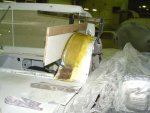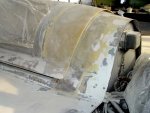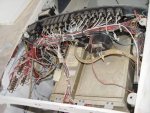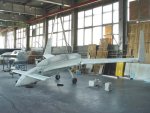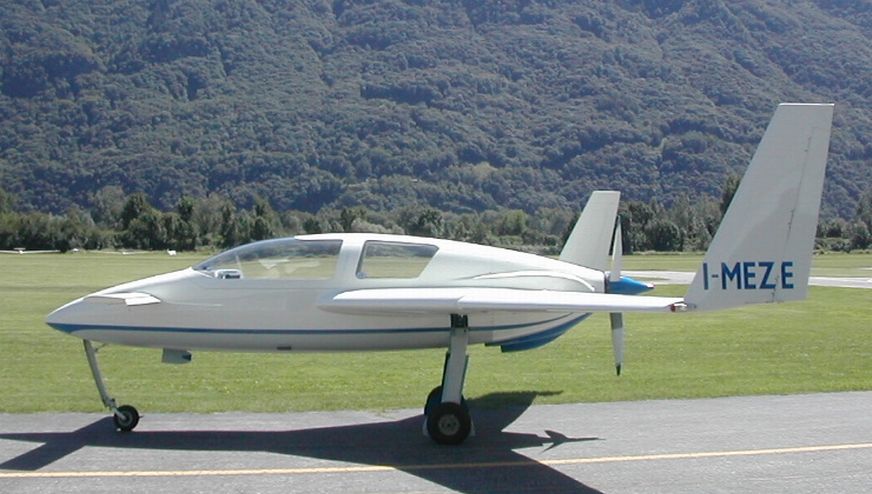Ещё раз о тестировании канарда на статическую нагрузку:
TESTING A CANARD TO FAILURE
(From CP45, Page 3, July, 1985)
The morning dawned bright and clear with wind (we had all been praying to the Mojave wind gods and they were kind!!). About 7:30 a.m. a bunch of volunteers from the Long—EZ Squadrons I and II showed up and started getting ready for the spot landing contest which they had kindly offered to organize. They barely had their white line painted on the runway, when the first airplane, Bruce and Bonnie Tifft overflew the airfield and announced they were on downwind for the landing. Bruce touched down less than 20 feet beyond the white line and we all began to think that this was too easy! HA!! Not at all, in fact Bruce was the leader for most of the day until finally Bill Dertel of Norco, California landed a scant 8 feet short of the line. The flyin did not really start until 9:00 a.m. but by that time there were 25 EZs tied down on the ramp! After it was all over it turned out that 39 VariEzes and 37 Long—EZs flew in. In addition to this of course there were present on the ramp the 85% scale Starship, the Voyager, the Grizzly, the Solitaire and the Defiant. The Gemini, Dave and Kathy Ganzers unique push pull twin two place was also on the line. The total count of airplanes was 83! This is the largest number of RAF designs ever assembled on one airport at one time, including Oshkosh!!!
A busy schedule, starting with the spot landing contest, then going into a hands on demonstration of composite construction methods, and the finishing of the composites, followed by lunch and the highlight of the day for most people, when we static loaded three different VariEze/Long-EZ canards. A raffle was held for a brand new multi-laminate Great American prop, a number of door prizes were given away and the party started breaking up around 4 p.m.
We did not get an absolute head count but we believe we had over 400 people. The hands on seminar was a standing room only situation. Even more people were jammed into the hangar for the static load testing. The first canard was one that was built by a homebuilder and was rejected due to an extremely dry layup. This canard was mounted in a frame (upside down) in exactly the same manner as it would have been in the aircraft.
Thus the static load test was a valid test of the aluminum attach points as well as the composite structure. With Burt directing proceedings, 25 lb lead shot bags were carefully loaded onto the bottom surface of the canard in the proper order and spacing to simulate airloads. Burt called out the load factor at each 2 g increment. At 10 g there was a loud crack as the top skin, forward of the spar cap failed in compression. The spar cap was still in good shape, so we continued to load shot bags until we were one bag short of a 14 g load on each side, when with a mighty crack, the canard failed catastrophically. All failures were in compression, there was not one tension failure. The attach points (lift tabs) did not fail. At the time of failure, there were 69 bags, each weighing 25 lbs loaded on each side of this canard! The tips were deflected an average of about 11 inches. This was 1725 lbs. on each side, for a total load of 3450 lbs hanging on those little lift tabs!!
A dramatic demonstration that surely made every builder feel good about his or her airplane.
Click to enlarge the actual canard test
We attempted to fail two more canards, but due to the fact that these had been painted white and were shiny and slick (each was airworthy and had over 800 hours of flying time each), we had difficulty keeping the lead shot bags from slipping off. Both went to 12 g with no sign of failure before the load of lead slipped. Interestingly, one side of one of these canards had been deliberately damaged by Burt using a special damage tolerance testing device. The damage was quite severe, enough to have punched deep dents all over an aluminum wing, but in spite of this, there was no difference in deflection from the damaged side to the good side, even at 12 g!!
WE at RAF had a really great day and we hope everyone who attended our flyin enjoyed it as much as we did. There were many beautiful examples of EZs on the ramp, presenting a golden opportunity to EZ builders and potential builders to look at and talk to the owners.
Взято отсюда: http://www.ez.org/cp45-p3.htm
